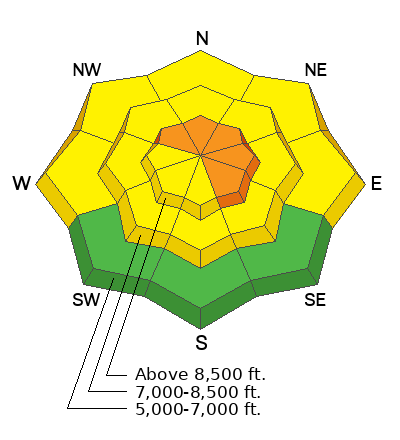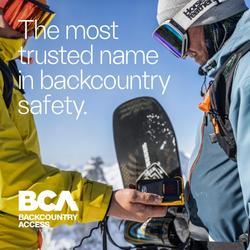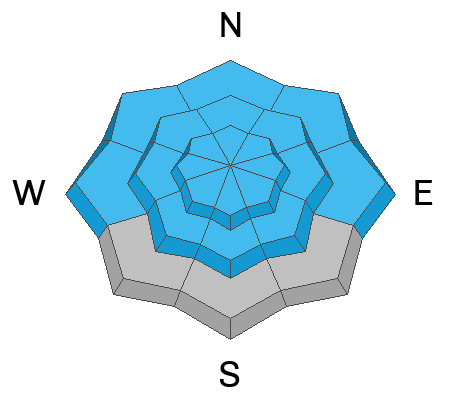The backcountry avalanche danger is not as high as it is in areas to our south because we received much less new snow this week. Very nice shallow, fast, and fun powder conditions are found in many areas. Safer lower-angled slopes (less steep than 30°) offer the best riding due to a solid crust formed during last week's warm spell. The fresh snow is not super light, but it has substance and keeps you off the scratchy crust unless you're riding in steeper terrain.
People could trigger slab avalanches of drifted new snow on slopes steeper than 30° at all elevations. Still, wind slab avalanches are most likely on upper elevation slopes facing northwest through southeast. Dangerous hard slab avalanches failing on a deeply buried persistent weak layer are unlikely yet possible in outlying rocky terrain with shallow snow cover.
The wind is blowing from the west-southwest this morning 15 to 20 mph at the 9700' CSI Logan Peak weather station, where it's 15° F. On Paris Peak at 9500', it’s 14° F, and the wind is blowing 10 mph with gusts around 20 mph from the west-southwest. The Tony Grove Snotel at 8400' reports 21° F and maybe an inch of new snow overnight. The station reports 82 inches of total snow, containing 123% of average SWE (Snow Water Equivalent).
Snow is likely this afternoon, with less than an inch of accumulation likely. Skies will be mostly cloudy, with a high temperature around 27° F at 8500'. The wind will blow from the west 10 to 13 mph. Snow is likely tomorrow afternoon, with 1 to 3 inches of accumulation possible. High temperatures are expected to be near 23° F, with winds from the west-southwest blowing 7 to 13 mph. It looks like we'll see pretty nice weather this weekend, with some sunshine and colder temperatures that should keep the snow quality good.
No avalanches have been reported recently, but we noticed some fresh wet avalanche activity at lower elevations in Providence Canyon on Tuesday. Also, on Tuesday, one party observed collapsing at upper elevations in the Franklin Basin Area. Audible collapsing (or whumpfs) is a red flag indicating unstable snow.
Check out local observations and avalanches
HERE.







